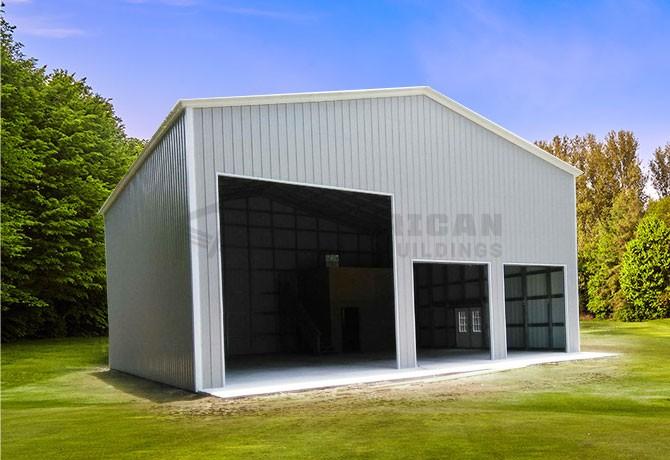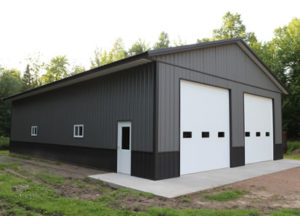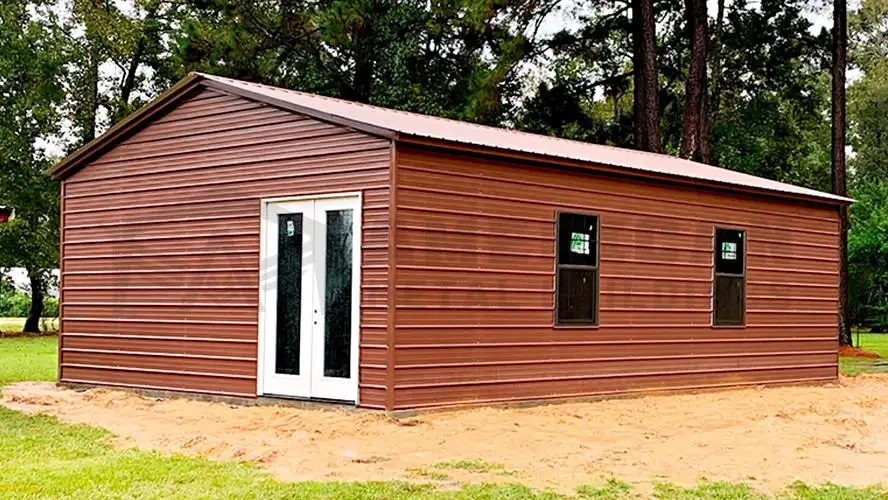Premium Steel Buildings: Durable and Trusted Alternatives for Industrial and Commercial Use
Premium Steel Buildings: Durable and Trusted Alternatives for Industrial and Commercial Use
Blog Article
Effective Installment Practices for Steel Buildings: Improving Your Building Process
In the world of building, performance is a keystone of success. The procedure can be substantially streamlined by applying efficient installation practices when it comes to putting up steel buildings. From careful planning to the use of pre-engineered components, each step plays an essential role in quickening the construction timeline. However, the key exists not just in speed however also in accuracy and top quality. By delving into the world of advanced installment methods and guaranteeing rigorous quality assurance steps, the potential for maximizing the entire construction procedure ends up being not just a possibility however a functional reality.
Preparation for Efficiency
When intending to make the most of effectiveness in steel structure installation, careful planning is necessary. Proper preparation establishes the structure for a smooth and orderly building and construction procedure, eventually saving time and resources. The preliminary action in planning for efficiency is conducting a comprehensive site evaluation. This evaluation helps identify any type of possible challenges or challenges that may arise during the installation procedure, enabling preemptive solutions to be developed. steel buildings.

Furthermore, reliable communication amongst all stakeholders is critical throughout the preparation phase. Normal meetings and updates help maintain everybody on the very same web page, minimize misconceptions, and promote a collective workplace - steel buildings. By investing effort and time right into careful preparation, steel building setup can be executed with accuracy and effectiveness
Using Pre-Engineered Elements
Efficient steel building setup methods can be even more enhanced by leveraging the use of pre-engineered parts. Pre-engineered parts are created and produced off-site to accurate specs, guaranteeing compatibility and simplicity of assembly during the building and construction procedure. By including pre-engineered components such as light beams, panels, columns, and trusses, builders can enhance the setup process, lower on-site labor demands, and minimize building and construction waste.
One key advantage of using pre-engineered parts is the substantial time cost savings they provide. Given that these parts are made in a regulated environment, they reach the construction website ready for fast and efficient installment. This not only increases the overall building and construction timeline yet likewise aids to lessen task delays and associated prices.
Moreover, pre-engineered elements are crafted for optimal efficiency and architectural integrity, ensuring the long-lasting resilience and stability of the steel structure. By utilizing these standardized elements, builders can accomplish regular high quality throughout various jobs while likewise gaining from cost financial savings connected with lowered product waste and labor costs.
Optimizing Building Sequencing
To make best use of productivity and performance in steel structure installation, strategic optimization of construction sequencing is paramount. By very carefully planning the order in which tasks are executed, building and construction groups can decrease downtime, decrease material handling, and streamline the overall structure process. One essential facet of maximizing building sequencing is read this article to prioritize vital course tasks that directly influence job timelines. This involves determining jobs that hinge on each various other and ensuring that they are finished in the most efficient order to stay clear of hold-ups. In addition, grouping comparable jobs with each other can assist decrease setup and teardown time between various tasks.

Executing Advanced Installment Methods
Executing innovative installment strategies boosts the performance and quality of steel structure construction tasks. By incorporating innovative approaches such as computer-aided design (CAD) for precise preparation, prefabrication of elements off-site, and usage of innovative machinery like robot welders, construction groups can considerably improve the installation procedure. Prefabrication lowers on-site labor requirements and construction time by making structure elements in a regulated environment, minimizing errors and remodel.
Making Sure High Quality Control
Building upon the application of advanced setup strategies, preserving rigid quality control actions is extremely important in making sure the structural integrity and dependability of steel structure projects. Quality control starts with the selection of high-grade materials that fulfill market standards and requirements. Normal examinations throughout the building and construction process help identify any deviations from the style or prospective problems that might jeopardize the building's strength.
Paperwork is a critical aspect of top quality control, making certain that all actions click to read in the setup process stick to the approved policies and strategies. This consists of recording assessments, product accreditations, and any type of adjustments made during building. Implementing a clear communication procedure amongst team participants and subcontractors helps improve the quality assurance procedure and attend to any problems immediately.

Conclusion
In conclusion, adopting effective installment methods for steel buildings is crucial for improving the building process. It is necessary to prioritize effectiveness in order to optimize performance and accomplish effective end results in steel building construction.
To maximize efficiency and performance in steel structure setup, critical optimization of construction sequencing is extremely important. On the whole, by enhancing construction sequencing, steel structure setup can be finished more efficiently, conserving time and prices in the process.
Implementing sophisticated installation methods boosts the performance and high quality of steel structure construction tasks. By prioritizing top quality control throughout the setup process, building and construction groups can deliver steel structures that are not only effective yet additionally durable and dependable.
In conclusion, taking on reliable setup techniques for steel structures is crucial for simplifying official source the building and construction procedure.
Report this page